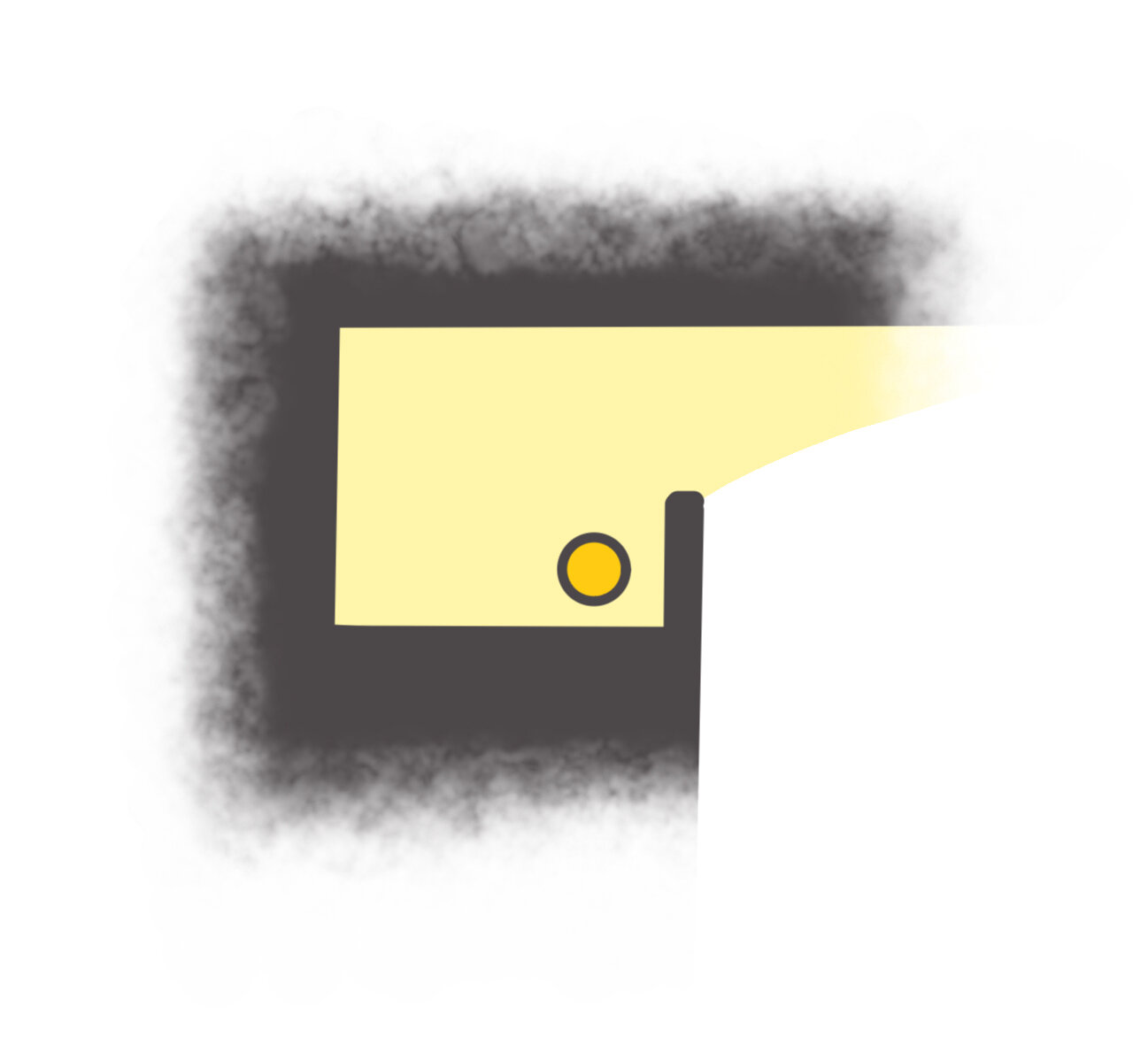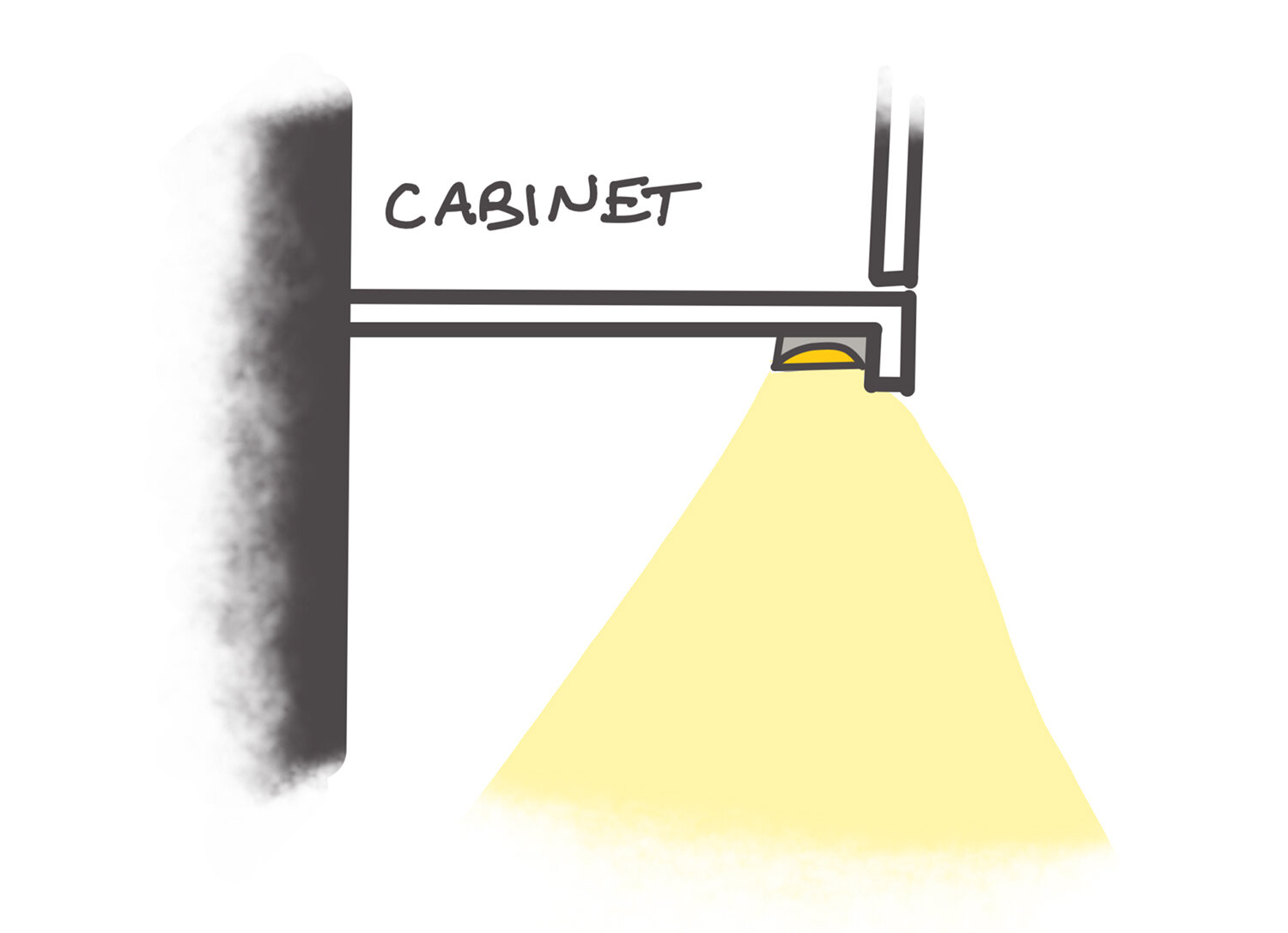Common Types of Light Fixtures
Whether you’re designing a new space or looking to update your home light fixtures are a vital part of the process. This list of the common types of light fixtures will explain how each type of fixture works and the best way to utilize them.
Indirect vs. Direct Lighting
It’s important to note the difference between indirect and direct lighting. Direct lighting provides downward light and indirect lighting provides upward light. Direct lighting is light that comes directly from a fixture and lights a specific area. This type of lighting is used in areas like the kitchen or bathroom where you need light to be bright enough to see what you’re working on. Indirect lighting is also known as ambient or general lighting. Indirect lights are generally lower intensity lights that cover a large area and rely on the light bouncing off of the ceiling or walls to illuminate the space.
Cove
Cove lights are a type of indirect light that can be installed in ceilings or walls. Cove lights provide a wash of light along the wall or ceiling they are open to. Lighting can make a room seem larger or smaller depending on how it’s used. When parts of a room are in shadow it makes the space feel smaller. Cove lights running along one wall or around the ceiling help provide light to all areas of the space which helps it to feel larger.
Pendant
There are many styles of pendant lights and while they are most often sources of direct light they may also provide indirect light. Glass shades will provide diffuse light that can make a room feel larger while an opaque shade will provide direct downward light that is best used for a focal spot in the room.
Surface
Surface lights are lights that are installed on the surface of a wall or ceiling. This type of fixture is most commonly used as direct overhead lighting. Surface lights tend to provide a lot of light over a larger area—good for areas like utility rooms, closets, or garages.
Recessed
Recessed lighting is a ceiling mounted direct lighting fixture. These lights can be used for everything from task lighting to general lighting. With traditional can fixtures there are softening baffles or reflective trim options that can be used. Baffles work best in spaces with low ceilings or where a cozier feeling is desired. A reflective trim that increases the light output from the fixture is most appropriate for kitchens and areas where brighter light is required. LED recessed fixtures are smaller and easier to install. Most models also have an option to select the color temperature of the light. A soft, warmer light makes a space feel cozy and is almost always appropriate for a residential setting. Stay away from “daylight” color LED fixtures since they can be a bit abrasive.
Sconce
Sconces are a wall-mounted decorative type of indirect fixture. These fixtures shine light on the wall and provide general lighting for a room. Fixtures with upwards light can make the room feel larger - those with downward light can make a space.
Track lighting
Track lighting is a type of direct light fixture that features directional lights that can move along a track. Track lights can be used as general downlight in a space or they can be oriented to highlight particular aspects of a room.
Under Cabinet
Under cabinet lighting is a specialty fixture that provides direct lighting under the upper cabinets in a kitchen. These fixtures provide extra lighting at countertops where it can be helpful while working in the kitchen.









